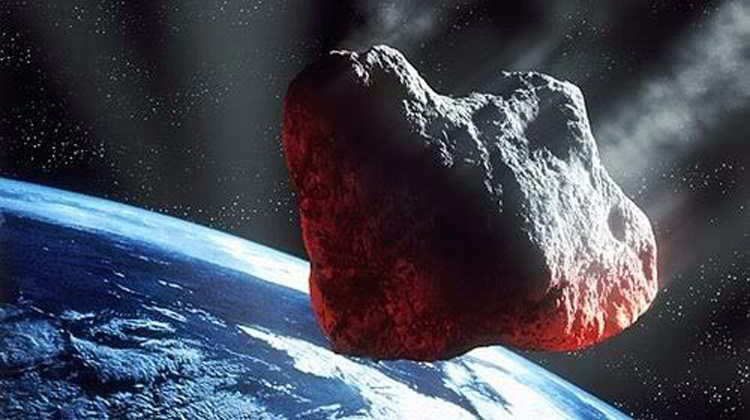Asteroid Day 2018 Is Coming! Check Out Events Near You

If you're into asteroid-themed events, this is your week.
Institutions around the world are hosting space-rock lectures, shows and other activities over the next few days, with everything coming to a head Saturday (June 30). That's Asteroid Day, the United Nations' official day to increase public awareness about space rocks and the hazards they pose to Earth.
For example, the National Air and Space Museum near Washington, D.C., will host a panel of experts Saturday that includes planetary scientist and former NASA astronaut Tom Jones. And another former NASA spaceflyer, Nicole Stott, will participate in Asteroid Day festivities at the agency's Kennedy Space Center in Florida. [Potentially Dangerous Asteroids (Images)]
To find activities near you, go to the Asteroid Day events page. And don't despair if nothing pops up in your neighborhood; you can catch 48 hours of space-rock coverage on your computer or phone, thanks to the Asteroid Day Live webcast. British physicist Brian Cox will host this event, which begins at 6 a.m. EDT (1000 GMT) Friday (June 29) and runs through Sunday (July 1). Cox will talk asteroids with a variety of high-profile people, including Stott and Jones, Planetary Society CEO (and former TV "Science Guy") Bill Nye, singer Sarah Brightman, biologist Richard Dawkins, and astronomer Martin Rees.
Asteroid Day was founded in 2014 by four people — astrophysicist Brian May, who's also lead guitarist for the rock band Queen; Danica Remy, president of the B612 Foundation, a nonprofit organization devoted to helping protect Earth against potentially catastrophic asteroid strikes; Apollo astronaut Rusty Schweickart; and filmmaker Grig Richters.

These folks chose June 30 for a very good reason. On that date in 1908, a space rock about 130 feet (40 meters) wide exploded over the Podkamennaya Tunguska River in Siberia, flattening 800 square miles (2,070 square kilometers) of forest.
That "Tunguska event" serves as a reminder of the threat posed by near-Earth asteroids (NEAs), whose total population is thought to number in the millions. To date, astronomers have spotted just 18,300 of these NEAs. But there's some good news on the detection front: Scientists think they've catalogued more than 90 percent of the really big NEAs, the mountain-size objects that could wreak havoc on a global scale if they hit Earth. And none of these space rocks are headed our way for the foreseeable future.
Get the Space.com Newsletter
Breaking space news, the latest updates on rocket launches, skywatching events and more!
Follow Mike Wall on Twitter @michaeldwall and Google+. Follow us @Spacedotcom, Facebook or Google+. Originally published on Space.com.
Join our Space Forums to keep talking space on the latest missions, night sky and more! And if you have a news tip, correction or comment, let us know at: community@space.com.

Michael Wall is a Senior Space Writer with Space.com and joined the team in 2010. He primarily covers exoplanets, spaceflight and military space, but has been known to dabble in the space art beat. His book about the search for alien life, "Out There," was published on Nov. 13, 2018. Before becoming a science writer, Michael worked as a herpetologist and wildlife biologist. He has a Ph.D. in evolutionary biology from the University of Sydney, Australia, a bachelor's degree from the University of Arizona, and a graduate certificate in science writing from the University of California, Santa Cruz. To find out what his latest project is, you can follow Michael on Twitter.









